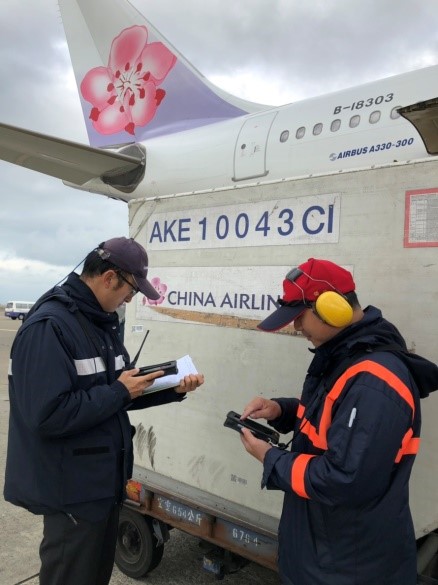China Airlines’ ramp operations for ULDs go paperless
 In an effort to reduce its reliance on paper-based system and improve efficiency, China Airlines told Air Cargo World today that it has completed testing of its Mobile Ramp Project, which involves the use of handheld digital devices that can scan and track each ULD as they are loaded.
In an effort to reduce its reliance on paper-based system and improve efficiency, China Airlines told Air Cargo World today that it has completed testing of its Mobile Ramp Project, which involves the use of handheld digital devices that can scan and track each ULD as they are loaded.
The Taiwan-based carrier has been using the customized devices since this summer at its hub, Taipei Taoyuan International Airport (TPE), said Alex Wei, associate vice president of China Airlines.
Under the program, ramp agents scan each of the bar-coded ULDs with the digital devices as the cargo is loaded into planes, creating an automatic record for the carrier’s “weigh-and-balance system,” which Wei said can help prevent the misloading of ULD containers.
The data on the contents of the ULD are then transmitted wirelessly via 4G connection to all supply chain stakeholders, eliminating the need for the ramp agents to rely on paper-based load sheets to check for accuracy, Wei added.
So far, Wei said, the new Mobile Ramp Project has reduced human error in the tracking of ULDs at TPE and has enhanced the safety of the operation. The project also fits into the carrier’s goal of reducing its carbon footprint and CO2 emissions by reducing the use of paper in its operations.




